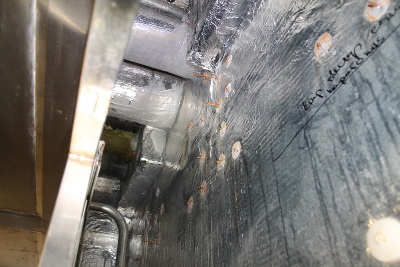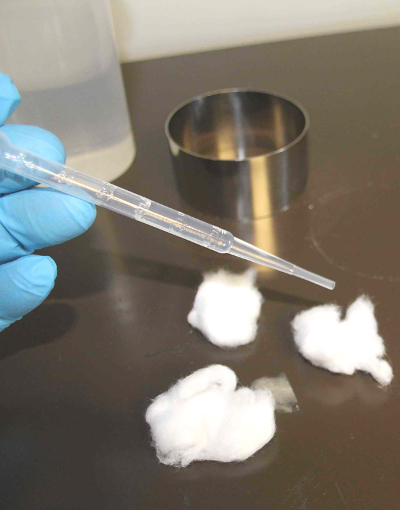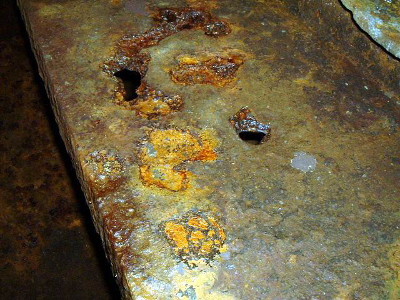By Paul Jowett
A fire or explosion can result in the contamination by smoke of facilities, equipment and stock, not only at the incident premises, but also at neighbouring sites. Contamination can also be caused by the inadvertent release of other compounds during such an incident, for example corrosive chemicals used in many manufacturing processes. These may be released as airborne contaminants in the smoke plume, or they could combine with the run-off water from fire-fighting activities.
It can also be the case that industrial processes can go wrong and release substances with the potential to contaminate the wider area. Alternatively, the intentional application of certain substances, for example pesticides, could be misdirected, such that stock or facilities within or near to the area of application may be subjected to contamination.
All these situations may require Owners/Insurers of affected parties to establish whether contamination has occurred, the extent to which contamination has occurred, and to seek advice on the best remedial action to take.

The Burgoyne Difference:
Over the many years of investigating such incidents, Burgoynes has developed novel and scientifically robust solutions to assist in investigating them and advising clients accordingly. In many cases, the client has turned to us because no other firm has had the high level technical capabilities to undertake such investigations, combined with our commercial awareness to advise on the potential to recover or mitigate losses.
Source of the contamination
If the source of the contamination is well defined, such as the release of a specific chemical compound from an industrial process, the focus of the assessment may be directed towards ascertaining the extent of that contamination over the release area.
However, there are certain situations where multiple potential sources of contamination exist. For example, an unintended fire in a property can release smoke that has the potential to contaminate a wide area, which can invite claims for compensation from the occupiers of neighbouring premises. It is important in those cases to determine scientifically whether any smoke contamination was the result of the subject fire, or whether it may be attributable to other sources such as the historical use of open hearth fires for heating, or smoke released in the form of pollution from other industrial processes or the use of motor vehicles.
Smoke is a highly complex mixture of both solid particulate and semi-volatile organic compounds, such that there is no single analysis that can readily discriminate between smokes from different sources. However, in a novel approach developed by Burgoynes, by combining a number of analytical procedures, we have been able to show both qualitative and quantitative differences between the smoke from a particular fire and that arising from other (sometimes historical) sources.

Extent of the contamination
Determination of the extent of any contamination involves taking multiple samples of surface contaminants from a variety of locations, extending from those close to the suspected source, to those that are remote from the source. This process is assisted by the investigator obtaining an understanding of the circumstances of the release process, for example the direction of the smoke plume in the case of a fire. In many cases, Burgoynes may have been involved in the investigation of the fire and, where there is no conflict of interest, have ready access to such information.
It is also important to take samples from areas remote from the area of suspected contamination, in order to determine background levels of a particular contaminant. As previously mentioned, in the case of smoke, the historical use of open hearth fires, pollution from industry or the use of motor vehicles can contribute to these background levels. Additionally, it may be appropriate to take reference samples of the contamination source. For example in the case of smoke, we can look for certain markers that are characteristic of that particular smoke that may not be present (or be present at different levels) in smoke from other sources.
A suitable analysis technique (or multiple techniques where appropriate) can be used to determine the levels of the suspected contaminant(s) on the various samples. The results are then carefully studied to determine:
- Whether contamination has occurred.
- Clarify if the contamination can be attributed to the incident
- Determine the extent of the contamination.
- Consider whether the levels of any contamination constitute ‘damage’ to the affected items.

Recovery / Liability
Where the source of contamination is linked to a third party, there may be the prospects for a recovery. Clearly, the first stage of this process is to provide scientific proof of a link, and to demonstrate that the contaminant has resulted in measurable (rather than perceived) damage.
Of course the same applies to a party defending claims brought against them by affected parties. For example, it may be the case that following an accidental release, trace quantities of a compound might be detectable on facilities or stock belonging to an external party. However, it may also be the case that the levels at which the compound is present can be determined to be below that which has a detrimental effect. Such a determination can only be tenable when backed by sound scientific evidence, which Burgoynes is experienced in providing.
Mitigation
Where contamination has been established, there may need to be consideration of how best to deal with it. In this connection, Burgoynes has experience advising on the types of materials and equipment that are at risk of damage due to contamination, together with the best methods for restoring contaminated equipment and stock. We can also advise on any residual risks, and how cleaning, restoration and repair could mitigate those risks. An early investigation can also ensure that swift remedial action can be initiated.
Case studies
Recent examples of where Burgoynes Contamination Assessment Service has delivered valuable information and/or substantial savings to clients include:
- Alleged contamination of stock in a ground floor unit by fire-fighting run-off water from a fire on the upper floors of a building. Chemical analysis indicated that the source of the water that had been in contact with boxes containing the stock was indeed likely to have been the run-off water. However, it was further determined by scientific testing that the stock within the boxes had not been contacted by the water, and hence was not damaged.
- Investigation of perceived smoke contamination of home furnishings material following a fire at nearby premises. Using a combination of chemical analyses and sensory testing, it was found that there was no scientifically demonstrable damage from smoke.
- Suspected contamination of stock stored in an outside yard area, following an accidental airborne release of product from an industrial process at a third party site. Our investigations determined that contamination had occurred, and provided unequivocal scientific evidence of a link between that contamination and the third party’s process.
- Advising on the potential damage to sensitive electronic equipment arising from a small fire during the construction of a marine vessel. Burgoynes was able to provide persuasive advice in respect of the efficacy of cleaning and the prospects for long term damage to safety critical equipment on a new build marine vessel.
Variety is the spice of life!
Clearly, the situations in which suspected contamination can occur may vary widely, both in terms of the contaminant(s) involved and the circumstances surrounding the release to the wider surroundings. This inevitably means that there are many instances where a standard approach, such as those offered by other firms, will prove to be too limiting. Rather, a flexible approach, utilising the vast experience gained from previous investigations and the pool of highly qualified personnel at Burgoynes, ensures that we are equally well equipped to deal with the more unusual situations. We are always pleased to discuss, without obligation, how we may be able to assist in these circumstances.
For further information on the range of Contamination Assessment Services that Burgoynes offers, or to discuss a specific matter, please feel free to contact Dr Paul Jowett on 0161 7764626.
Please also see our previous articles relating to this area of our work:
ASSESSMENT AND QUANTIFICATION OF CONTAMINATION BY SMOKE DEPOSITS by Dr Ian Wadsworth
CONTAMINATION SERVICES CAN SAVE UNNECESSARY EXPENDITURE by Dr Ian Wadsworth